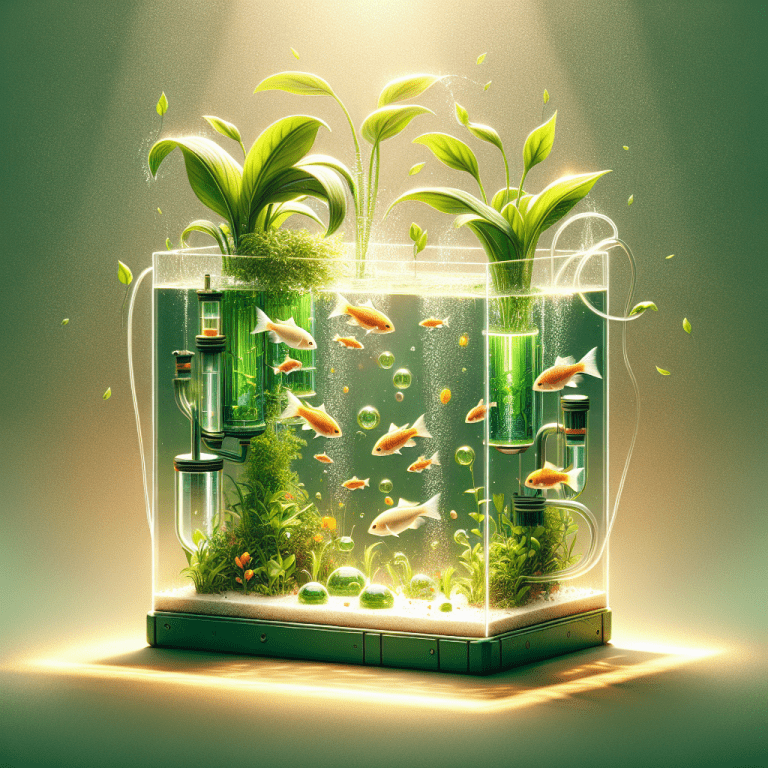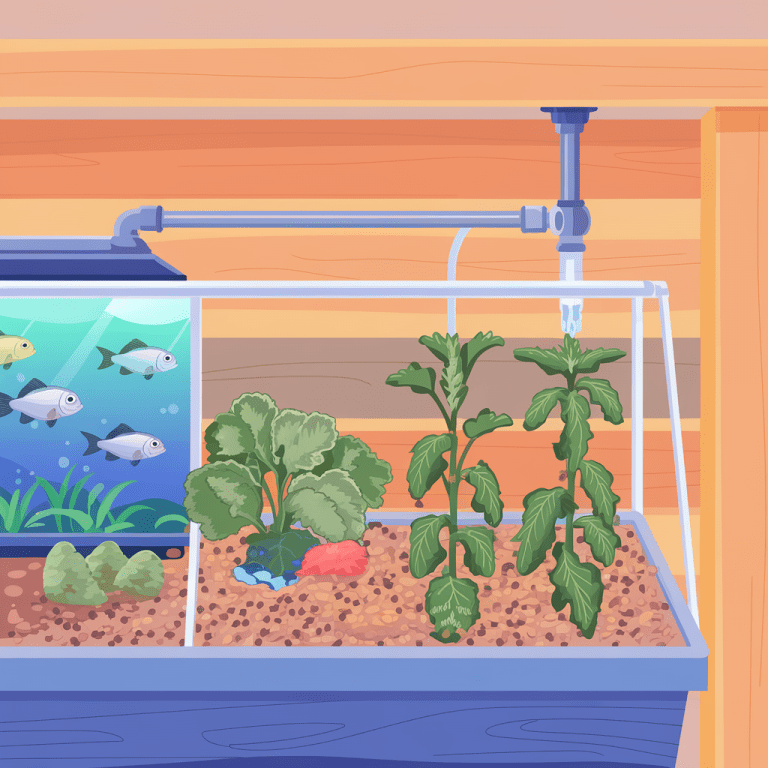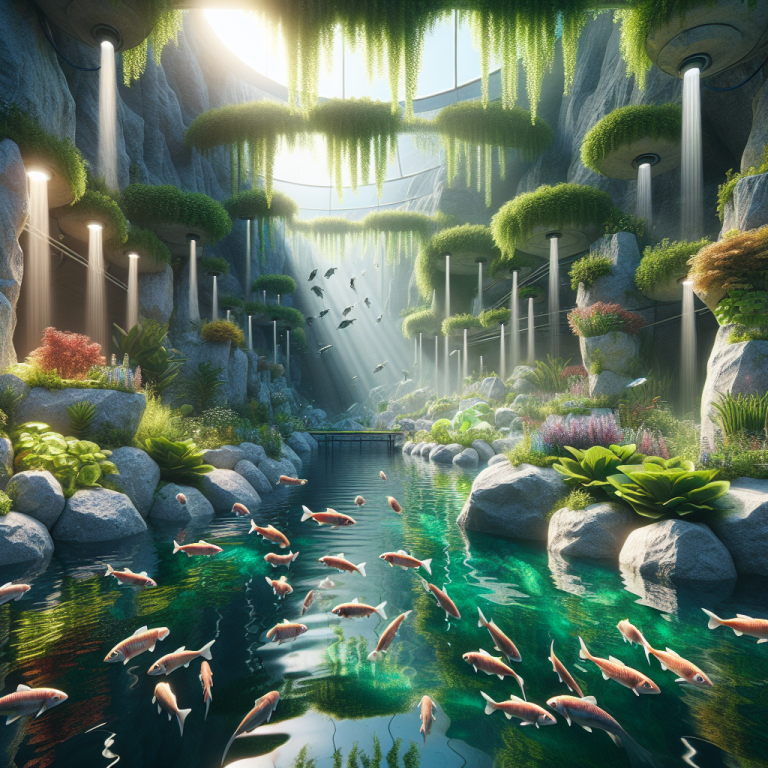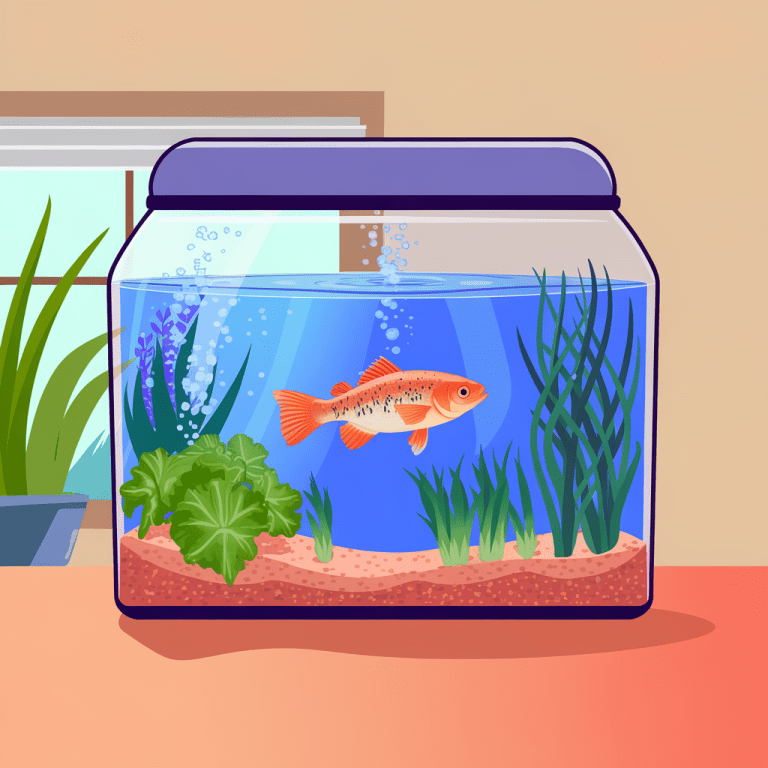Ever feel like a fish out of water when it comes to understanding indoor aquaponics systems? No worries, you're in good company. Like learning a new language, deciphering aquaponics—especially for you indoor garden enthusiasts—can feel intimidating.
Well, this is your olive branch of assistance! Consider this your comprehensive roadmap, a Beginner's Guide if you will, guiding you through the fascinating, yet intricate world of indoor aquaponics systems. We promise, it's not as complicated as gobbledygook!
Here, we'll untangle the intricate web of aquaponics step by easy step. You'll get your feet wet (figuratively speaking) as you dive into realms from choosing your perfect space, to selecting your ideal fish and plant combinations. You'll also discover the key to maintaining your system's balance—critical for a thriving setup.
Wondering how to ensure top-notch water quality, or when and how to harvest your fresh produce? Fret not. Our guide has got you covered. And remember those pesky issues that always seem to surface when you're trying something new? Relax. We have a troubleshoot guide armed with solutions to common hiccups.
Welcome aboard our journey to innovation and creativity through ‘Indoor Aquaponics Systems’ – where health meets wellness in a uniquely fun, satisfying and enlightening way. The fact that you're here, my friend, speaks volumes about your determination and thirst for knowledge. Hey, who's the fish out of water now? Not you!
Understanding Indoor Aquaponics Systems
Transitioning seamlessly from the definition, it’s time to dive into the process of setting up indoor aquaponics systems. Have you ever had a fish tank? It’s similar — well, sort of.
First things first, we need three key players: fish, plants, and bacteria. Unusual trio but they're essential for a thriving aquaponics system. Here’s why: the fish produce waste (good for plants but bad for fish). The bacteria, superstar of the show, arrive and break down the toxic fish waste into nutrients. And voila, the plants feed on these nutrients, all while filtering the water for the fish.
Intriguing right? But before you start whooping about this circular saving-the-world activity, let's emphasize its importance. Indoor aquaponics systems handle your nutrition, promote wellness, even form an artsy little ecosystem for the living room.
But no rush, the real joy of indoor aquaponics is the learning curve. Embrace the initial blunders, the overcrowded tank, the dying plants. They offer superb life lessons — about patience, resilience, even loss — making our homes a little greener, hearts a bit warmer.
In the journey of our health and wellness, let’s welcome the challenge. After all, real growth isn't it about innovating, creating, and nurturing life in different forms? So, ready for getting hands soiled in your new indoor aquaponics project?
Choosing the Right Setup for Your Space
Building on the insights shared earlier, it's time to choose your indoor aquaponics system. But how do you get started? Much like picking a roommate, you'll need something adaptable to your lifestyle. The system should be as grab-and-go or hands-on as you want!
First up is gaining real estate knowledge of your home—eyeball the space. Every indoor aquaponics system is unique. Think about it, are you after a modest 10-gallon desktop model? Or, if you're feeling ambitious, a 200-gallon setup? Your system's architecture would be determined by the space at hand.
Next, let's delve into the nitty-gritty details. Have you thought of light exposure your system would get? Lack of natural sunshine need not drive you into despair. Grow lights are a thing, buddy! Veteran gardeners swear by them.
Once you're set on the size, start contemplating the aquaponics method. Deep water culture, nutrient film technique, media-filled bed, or vertical farming? Hang on, feeling a brain freeze? Fancy tech terms, we know. But trust us! Find joy in the journey of discovering and strategizing which model suits your indoor tapestry.
Finally, don't forget—the systems rely on electricity and water. Availability and safety here are key. Remember, indoor aquaponics aren't just about going daggers drawn with challenges. It's about embracing the novelty while aligning with your core values of innovation and creativity.
Building Your Indoor Aquaponics System
Building your own indoor aquaponics system isn't as complicated as it sounds. And don't worry, we're here to make it simple, even if it is your first time!
Step one is all about location. Find a spot in your house that gets lot of sunlight. This is crucial for your plants' growth. Imagine waking up to a mini sunshine-filled oasis right at home!
Then, the materials! Get yourself some fish tank, a water pump, grow bed, and pipes. And don't forget the essential parts – fish and plants. Hedge your bets and go for easy – think goldfish and leafy greens!
Next is setting up. Connect your fish tank to the grow bed using pipes. Wait, confused much? Think of it like a water slide where the fish's waste slips down to the plants.
The water pump is your lifeline. It helps circulate water and nutrients from the fish to the plants. Setting it up is like assembling a lego set, just fit in the correct pieces!
Once done, introduce your fish and plants to their new home! Feed the fish daily to produce the vital nutrients required by the plants. It's like providing free meals to your green pals!
In no time, you'll have a thriving indoor aquaponics system. Remember, practice makes perfect. So, even if there are a few bumps, keep going.
Remember to show off your innovative indoor aquaponic creation online to stir your friends' curiosity! And be proud. You’re contributing to health and well-being in the most creative way possible!
Selecting Fish and Plants for Your System
As we move forward in our indoor aquaponics systems journey, let's jump straight into how you can select fish and plants. Always remember, in the closed ecosystem of an indoor aquaponics system, compatibility is king! Just like you'd prefer to room with friends rather than foes.
Imagine this – you’re creating an underwater town. The fish are the townsfolk, the plants are the recycling service. Pick fish that thrive in your local temperature and pH levels. Bettas, Tilapias, or Goldfish are great starters.
Pair these with water-cleaning green troops, like spinach, basil, or lettuce. However, avoid acid-loving plants like blueberries. These guys need a lower pH, which can stress out your fish!
Now, what if you threw a crocodile in amidst the peaceful townsfolk? Chaos! Just like crocodiles, some aquaponics components don't play nice. Remember, vegetables requiring high nutrients will need more fish. Tomatoes or cucumbers with a few tiny guppies won't end well. Strikes a wrong balance, right?
Now relish this – you're savoring fresh, crunchy salads off your indoor aquaponics unit. You've cracked the selection process. Awesome, isn't it? Can you feel that surge of accomplishment? It's innovation and creativity mixed with a dash of joy!
Stick around, next let’s dive into maintaining your system. Trust me, it's not rocket science! You're already nailing this aquaponics thing!
Maintaining the Balance in Your System
You remember about 'balance' from the early yoga classes, right? It's critical for indoor aquaponics systems too. The system works its magic when everything balances out, kind of like life. However, finding that happy medium is another case altogether. Each aquaponic system needs balance between fish, bacteria, and plants.
Visualize it as a whirlpool buddy system. Fish produce waste, a five-star meal for bacteria. Fancy feast indeed! Bacteria digest the waste and create nutrients, which then get vacuumed up by your plants. This chaining effect is the core of indoor aquaponics systems.
Now, before you dive in perfecting your fresh indoor Eden, testing is needed. Monitoring the pH levels, ammonia, nitrates, and nitrites will become your new hobby. Handy kits are available to help. It's enough to watch water parameters once a week. Make notes, track the alterations and observe how your system responds. Indoor aquaponics systems are beautifully responsive to tweaking, much like jazz music. A small adjustment can ripple into a significant melody of growth.
Remember our chat earlier about exploring? And isn't exploring new hobbies the best part of adulting? Indoor aquaponics systems brings that joy. Let's continue to share in this buzz of innovation and creativity. Trust the process and the new-eco-system will reward you in buckets (of healthy, tasty rewards). Enjoy!
Monitoring and Adjusting Water Quality
Navigating the exciting, ever-evolving world of indoor aquaponics systems, we arrive at a critical juncture: water quality. Without fuss or fluff, let's delve into it.
Keep it quick, simple, and handy—like a cue card you can pull out anytime. The essential friend of each aquaponics enthusiast is a water testing kit (Trust me, it's like having a pizza delivery on speed dial!). Regularly using this kit will guide you through the confidential mess of mysterious underwater chemistry. Thus, maintaining top notch water quality becomes a breezy task.
What matters most? Ph level. Your plants and fish will thank you for providing a stable environment. Aim for a pH around 6 to 7. But remember: swiftly altering pH can be fish-threatening, like scarfing down a spicy taco without any milk nearby.
Nitrate levels are equally vital. High nitrate counts could result in the 'angry mob' scenario – imagine your aquaponics system like the fish and plant version of social media outrage. Keep it in check.
It might sound overwhelming, like a math test the night before. Fear not! Indoor aquaponics systems are intuitive, almost conversational. Listen, adjust, and enjoy the interaction of nature right inside your home. Sounds pretty nifty, eh?
Harvesting Your Food
Expanding on our previous discussion, we've now positioned our indoor aquaponics system and managed its routine care. Now comes a gratifying phase – harvesting your own food. Imagine the exciting sight of your indoor plants flourishing. This made possible by your indoor aquaponics system. Cue, happy dance!
Jumping right in, begin at the roots. Simply snip the beautiful, fresh greens leaving an inch or two for regrowth. For fish, observe them with care. Select the biggest ones to maintain equilibrium in your system. Still, do ensure they're at an eatable size, usually after six months. Understandably, you might feel queasy. Feel free to invite over a friend with experience!
A key aspect is maintaining this dynamic balance. Harvest in batches to evenly spread system impact. For instance, if you have ten fish, harvest two at a time. Same logic applies for plants. This way you uphold system efficiency while still enjoying fresh produce regularly.
Now, picture crisp vegetables in your salad and grilled homegrown fish for dinner. It’s your tale of sustainable living and nurture. It feels empowering, isn't it? Indoor aquaponics systems endow you with continuous food. Imagine sharing this surprise with friends. You've grown dinner in your living room! Snazzy right?
Troubleshooting Common Issues
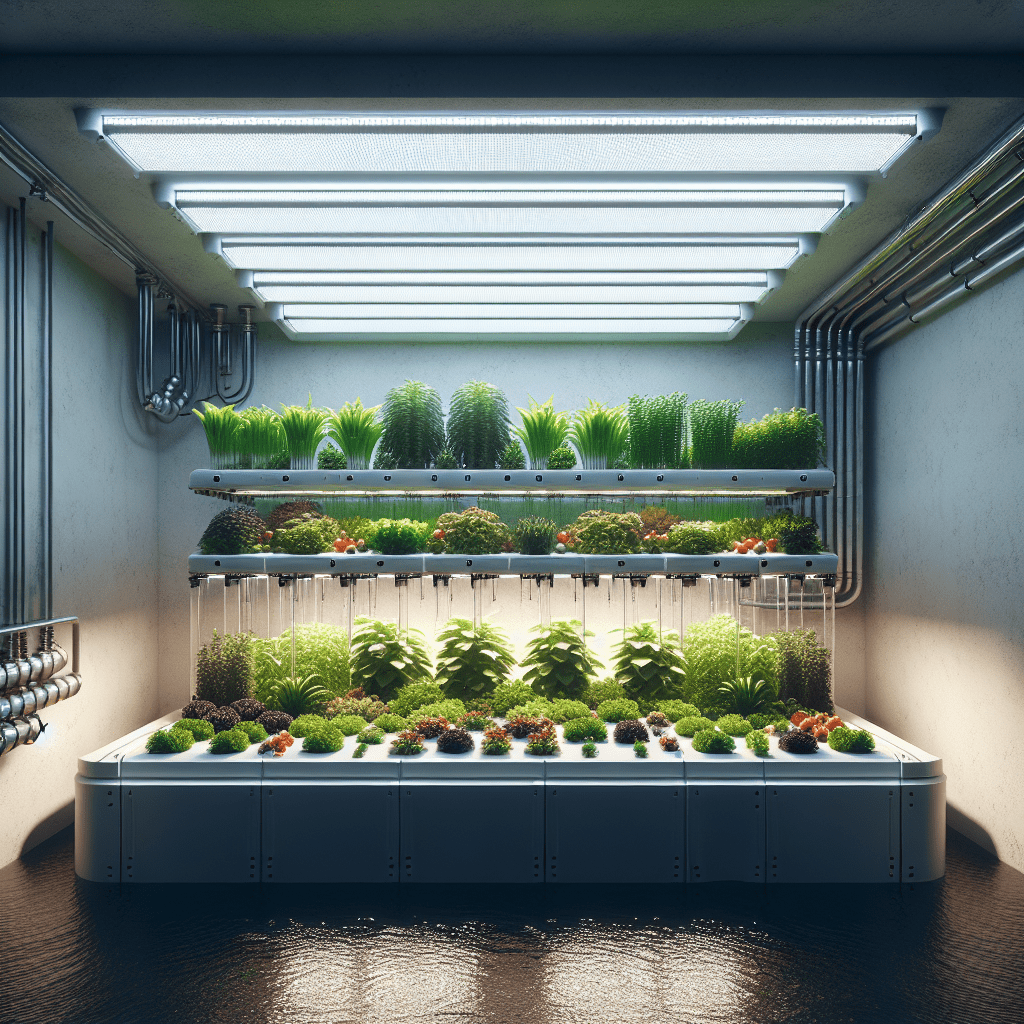
Expanding on our previous discussion about indoor aquaponics systems, there's no denying that it can be a bit tricky at first. But don't worry, it's alright even if you're not a natural-green thumb. First, you may notice some plants growing slower than others. Could be nutrient deficiency. Try changing your fish food. A different brand might offer more varied nutrients that your plants crave.
Also, ever noticed if your water turned murky? That's an imbalance in your system's bacterial colonies. Thin out your fish population or increase your plant quantity. The yin and yang of your indoor aquaponics system need upkeep.
An utterly common issue? Trout playing the ‘dead fish' act. It's your tank’s temperature! Supercool freshies like trout need cold water. Consider switching to tilapia. They're every bit as tasty, more forgiving, and won’t give you frigid glares.
Remember how we talked about realizing the joys of maintaining your aquaponic system? Sure, common issues can seem daunting, but troubleshooting is a big part of that journey. It's like turning heads at Quidditch only because you always whizz by on your broom. But think about mastering the Snitch handle; now that's a game-changer. So go on, wave your wand, work out these problems, and in no time at all, you’ll be whizzing past 'noob' to 'pro', on your way to becoming an aquaponics star!
Well folks, look how far we've come! You can now shout from the rooftops, that you – yes you! – understand indoor aquaponics systems! And not just understand – but also how to implement.
We've journeyed from understanding and choosing to building and managing. Real growth, eh? Our chat might lean technical, but it's honest; indoor aquaponics sounds official, but it only takes creativity and innovation.
Now remember, dear reader, no one ever said it'd be easy. Takes effort, and not just once, but constantly. You're learning to balance a delicate ecosystem, after all. Yet, as with life, it's rewarding. Envision biting into a juicy tomato you grew yourself. Or introducing your pet goldfish to new friends in an underwater garden of your creation!
With these tools, you can conquer the challenges. Seek more truth, navigate hurdles, and tailor your system to your rhythm. Get your hands wet, experiment! Create harmony within your home. Let that inner gardener bloom.
In case you stumble, always refer back here. We've got your back! So come on, dive in! Set up your indoor aquaponics system today. Embrace that challenge, and taste the fresh, homemade salad of success!
Remember, nurture your system with passion, and it will return the favor tenfold. Good luck on your verdant voyage, my fellow homegrower!
